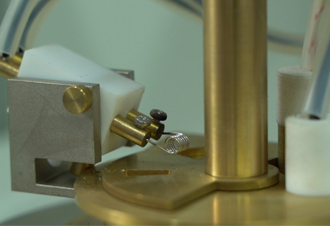 English
English


dielectric breakdown
Understanding Dielectric Breakdown Mechanisms and Applications
Dielectric breakdown is a critical phenomenon in electrical engineering and materials science, relating to the failure of an insulating material when subjected to a high electric field. This breakdown can lead to a sudden and uncontrolled flow of electric current through the dielectric, resulting in damage to electrical components, catastrophic failures, or even fires. Understanding the mechanisms behind dielectric breakdown is essential for designing safer, more reliable electrical systems.
At its core, dielectric breakdown occurs when the electric field strength exceeds a specific threshold known as the dielectric strength of the material. This threshold varies by material and can be influenced by factors such as temperature, pressure, and the presence of impurities or defects within the dielectric. When the electric field surpasses this limit, the insulating material can no longer resist the flow of electric current, leading to a breakdown.
The mechanisms responsible for dielectric breakdown can be broadly classified into several categories, including thermal, electrical, and atomic-level processes. One common mechanism involves the ionization of atoms within the dielectric material. When the electric field becomes sufficiently strong, it can strip electrons from atoms, creating free charge carriers. These free electrons can then collide with other atoms, causing further ionization and establishing a chain reaction that results in a conductive path through the dielectric.
dielectric breakdown

Another mechanism is related to thermal effects. As electrical energy is dissipated in the form of heat, it can raise the temperature of the dielectric material. If this temperature exceeds the material's thermal limits, it can lead to degradation of the material structure, facilitating breakdown. The interplay between electric and thermal processes is often critical in understanding how dielectric breakdown occurs in real-world applications.
Applications of dielectrics span across various fields, including electronics, power generation, telecommunications, and insulative coatings. For instance, in high-voltage applications, such as transformers and capacitors, materials with high dielectric strength are essential to prevent breakdown and ensure proper functioning. The choice of dielectric materials is paramount, as different materials exhibit varied breakdown strengths under different conditions.
Researchers continuously seek to develop new materials with improved dielectric properties. Innovations in nanotechnology and composite materials are leading to the creation of dielectrics that can withstand higher electric fields, which could significantly enhance the performance and longevity of electronic components. For example, polymer nanocomposites are a promising area of research, where the addition of nanoparticles enhances the dielectric strength of traditional polymers.
In conclusion, dielectric breakdown is a complex phenomenon with far-reaching implications for electrical systems and devices. By understanding the mechanisms of breakdown, engineers and scientists can design materials and devices that are more resistant to failure. As the demand for more efficient and reliable electrical systems continues to grow, ongoing research into dielectric materials will play a crucial role in shaping the future of technology.
-
Differences between open cup flash point tester and closed cup flash point testerNewsOct.31,2024
-
The Reliable Load Tap ChangerNewsOct.23,2024
-
The Essential Guide to Hipot TestersNewsOct.23,2024
-
The Digital Insulation TesterNewsOct.23,2024
-
The Best Earth Loop Impedance Tester for SaleNewsOct.23,2024
-
Tan Delta Tester--The Essential Tool for Electrical Insulation TestingNewsOct.23,2024





